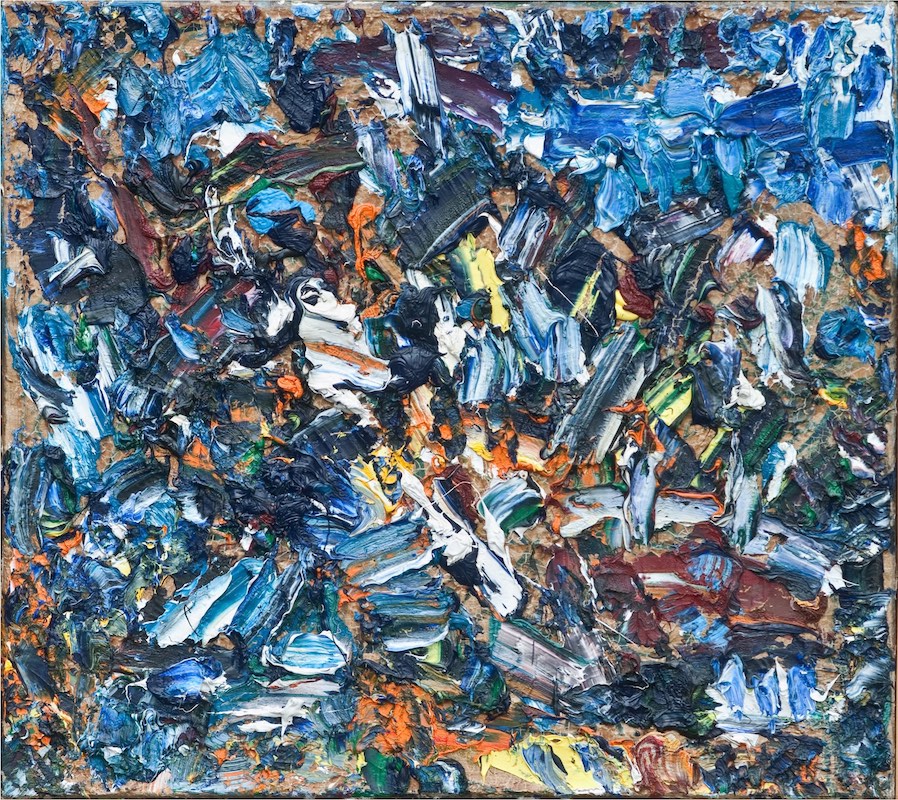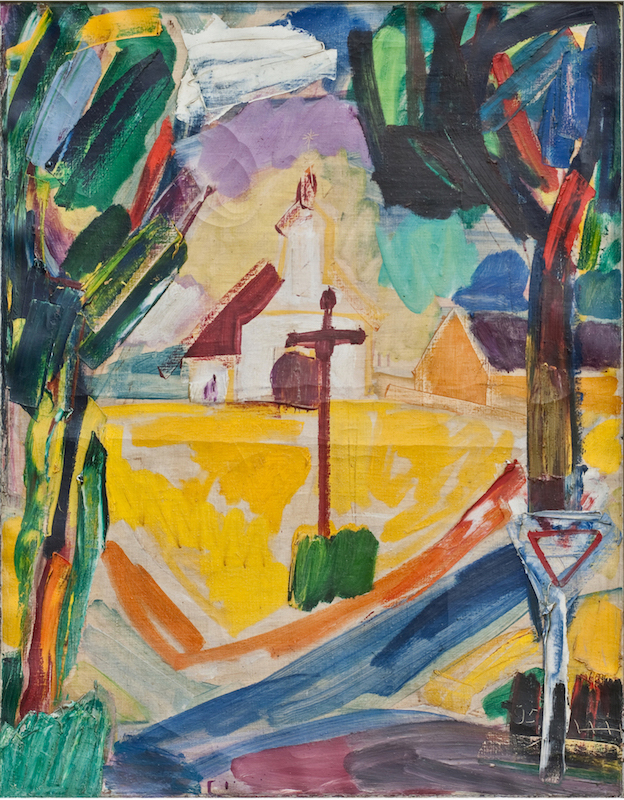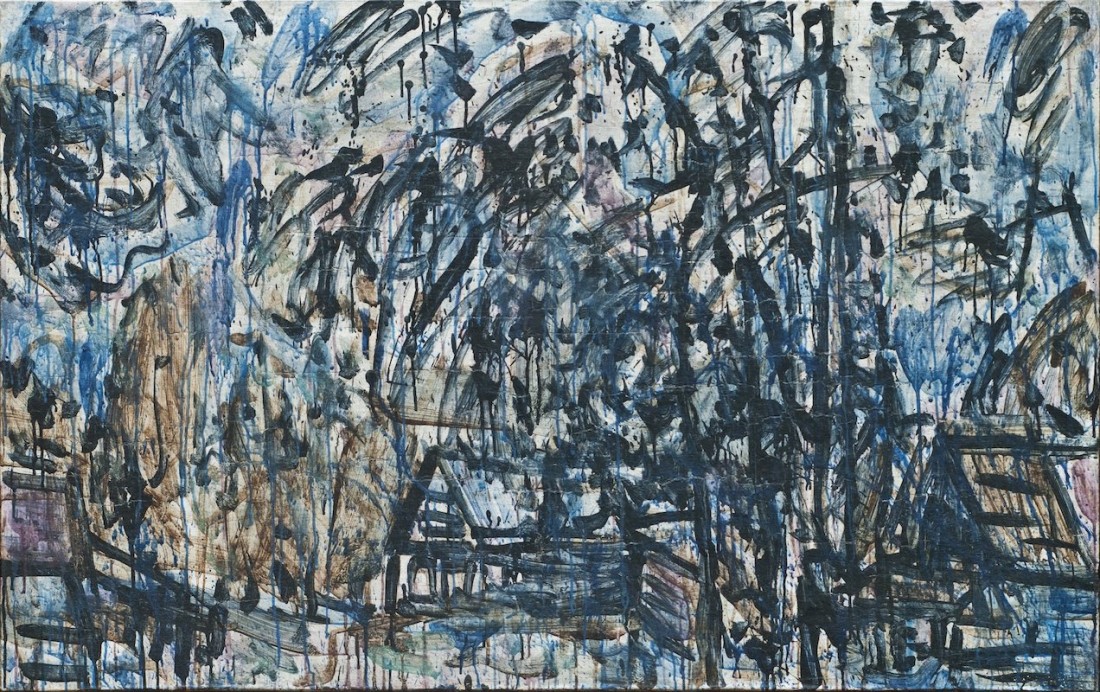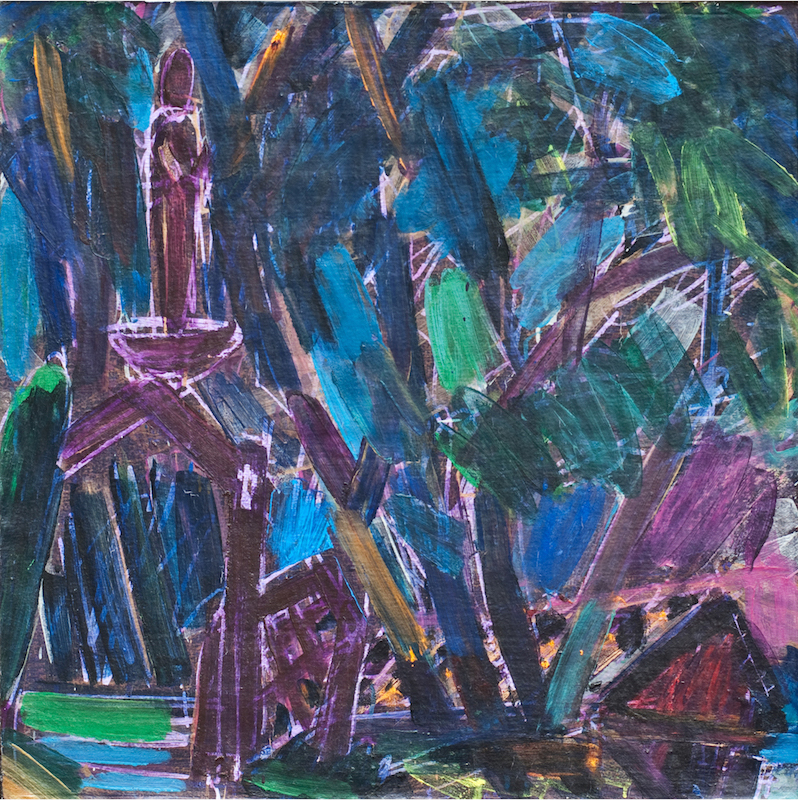Alfonsas Vilpišauskas (1945-2015)
During the Soviet years, Steponas Žukas technical college of applied fine arts (so-called “Stepžukė”) was founded in place of Kaunas School of Arts, where Alfonsas Vilpišauskas taught painting in the 1970s. What is remarkable about this teacher and painter? He’s connected to the city spirit and especially Kaunas through one strong and tense thread – his students. At the end of a school year, upon evaluations, several of his students can recall Vilpišauskas’ advice and motto of what a good painter must carry with themselves in a continuous search of their own image: good eyesight and good health. His own paintings apparently needed a strong ambition, quick reflexes, spontaneity and an ability to create a new image of the World in one breath.
The painter would often travel on foot since everything was nearby in the Old Town: his study, art school, and he would take these paths down the Owl Hill.
Some years ago Alfonsas Vilpišauskas told an old story that happened around these parts, a story about a good painting. He kept in close contact with all the Kaunas painters, painter Vytautas Povilaitis among them, however, they would hardly ever discuss painting, except for that single time. This was the end of the 1970s, when both Vilpišauskas and Vytautas Povilaitis used to work at Stepžukė on the Own Hill. There was a gathering one evening, a feast, maybe for an exhibition or a preview, nobody was in a rush to leave, some took a nap, and around five or six o’clock in the morning both painters were still chatting, but after realising nobody else was around any more so they left too, walking down the hill towards the Old Town at dawn. Suddenly Vytautas asked, “Alfa, is it possible to do a good painting?”, “Very difficult,” Alfonsas replied. Then added, “almost impossible”. “Oh, well said!”. They became very good friends since then, but did not have any more of such heart-to-hearts.
Although Alfonsas Vilpišauskas lived in the city, he only used to paint in a city study during the cold season, so it’s quite hard to imagine him as a city painter. He would mostly paint natural scenery in rural areas and settled down in Davatkynas during the last decades for a long time, where he would paint every day and would organise plein airs with his friends before leaving.
What did the painter see in those places? Something he could not find in a city? His work was not traditional countryside landscapes. It was more of a longing for a parallel tranquil world, where dramas and fights happen between arranged items and colours. Indeed, eventually the painter started “impatiently” using paint straight out of the tube more and more often, as if rushing to create densities and depths for an own long debated and apperceived pictorial image (e.g., “Blue Šilavotas”, 2002). This search for a pictorial image is connected to the painter’s ideology, like he himself has mentioned, and it’s not too hard to find the themes, motifs of interwar painters in his own paintings, thus his chosen objects of nature are akin to “Country Street with a Chapel” by Viktoras Vizgirda (1939) or “White Apple Tree” by Antanas Samuolis (1932). And not necessarily specific pieces, Alfonsas Vilpišauskas was interested in the sensibilities of all the painters in the Ars group, trying to connect Lithuanian folk art with the modernism of Western Europe. The painter followed them deliberately, thus getting closer to an abstracted, mysterious painting that in the 21st was still reminiscent of the frivolousness of the Ars group, but at the same time was drawing a different measure of landscape understanding – to see and experience the effect of constant movement and cyclic recurrence through a thick stroke of paint.
Alfonsas Vilpišauskas (1945-2015) was born in Savidonys Village (Ukmergė District). Studied at the Kaunas four-year children’s art school from 1960 to 1964. In 1964-1975 was a student at National Arts Institute in Vilnius, where he acquired qualifications of a painter and an educator. Was a lecturer at Kaunas S. Žukas Technical School of Applied Fine Arts (nowadays – Kaunas University of Applied Sciences, Faculty of Arts and Education) in 1975-1978. From 1978 – painting instructor at the Kaunas four-year children’s art school, from 1995 – expert educator. From 1989 – member of artist group “Angis”, member of the Lithuanian Artists’ Association from 1990, was awarded the highest national grant in 1999.
The works of Alfonsas Vilpišauskas have been acquired by the M. K. Čiurlionis National Museum of Art, MO museum, Kaunas Modern Art Foundation, other private collectors in Lithuania and abroad.
Back to the map




